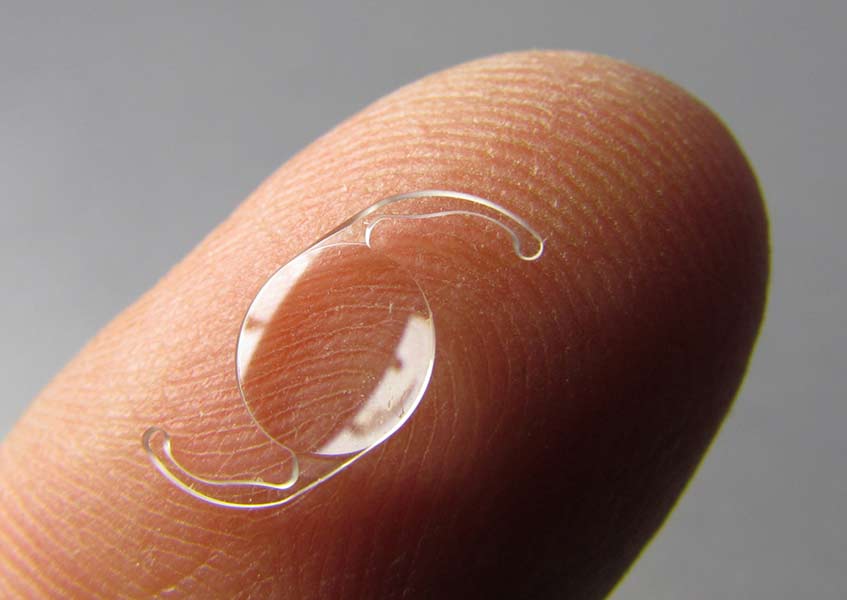Maybe you’ve noticed it most when you’re trying to do things like texting or trying to put on makeup?
Refractive lens exchange (RLE) is a vision correction procedure that is kind of like LASIK. Like LASIK, it can mean freedom from your glasses and contact lenses and fix nearsightedness, farsightedness, and astigmatism.
But the difference for you is that it can also get rid of those frustrating readers and bifocals you’re currently depending on.

Why Refractive Lens Exchange (RLE)?
Over time, our natural lenses become less flexible, making it difficult to see up close. Refractive Lens Exchange (RLE) can help make your world look crisp and clear without readers or bifocals.
Are You Frustrated
Reading Your Phone?

Do You Have Trouble
Seeing The Computer?

Do You Depend On Glasses Or Contacts
To Drive & See Far Away?

See Your BEST at All Distances with RLE!
Presbyopia occurs when your eye’s natural lens is no longer as flexible as it once was. As a result, this makes it more challenging to complete tasks with near vision, like jotting down your grocery list, crafting, or doing a crossword puzzle.
A significant part of what makes refractive lens exchange such an attractive procedure is that it can correct presbyopia. This distinction makes refractive lens exchange unique because other procedures like LASIK and PRK cannot correct presbyopia.

Your natural lens is removed and replaced with an artificial lens during the RLE procedure. RLE is a comfortable and easy procedure to undergo thanks to the numbing eye drops applied before it begins. The natural lens loses its flexibility because of aging, with many people needing to rely on reading glasses when they want to see things in front of them. Sound familiar?
The artificial lens, called an intraocular lens or IOL, replaces your natural lens and corrects refractive errors and presbyopia. Before you know it, you could be enjoying the endless benefits that come with better vision after RLE! Wouldn’t you like to see clearly without cataracts? RLE prevents cataracts, meaning you won’t need cataract surgery in the future. Because it replaces your natural lens, where cataracts develop, all you’ll have is crisp, clear vision for years to come! Thanks to an incredible procedure like refractive lens exchange, that’s now possible!
Let’s take a look at the information you need to start your journey towards better vision!
What happens during the procedure?

You’ll be totally comfortable during the procedure. After Dr. Cutarelli makes sure your eye is completely numb, he will gently create a small incision in the cornea to remove your natural lens. Your natural lens is then replaced with an artificial lens, called an intraocular lens or IOL that is chosen by you and Dr. Cutarelli together before your refractive lens exchange to fit your eye’s needs and the vision you want.
The entire procedure takes less than 30 minutes!
Refractive lens exchange is extremely safe – over two million Americans have it done every year!
Feel safe in the experienced hands of Dr. Cutarelli who has performed over 90,000 surgical procedures and is passionate about each and every patient in his care. It’s important for you to feel confident in your decision: Dr. Cutarelli reviews potential risks and what to expect before, during and after refractive lens exchange with you in detail. Any and all questions will be answered so you are 100% excited about your new vision!
Getting out of glasses and contact lenses – or needing them less – is your goal. Premium lenses and technologies like the PanOptix lens, the Light Adjustable Lens, and astigmatism correcting lenses here at Cutarelli Vision offer various benefits and outcomes to tailor your results for vision that’s right for YOU! Dr. Cutarelli will guide you through these options and what you are a candidate for, so you feel confident in your selection.
Whether you’re reading a menu at your favorite restaurant, putting on makeup before a big night out, or baking with your family, you’ll never have to think about where you put your glasses. Why? Because you won’t need them anymore! How’s that for visual freedom?
Which procedure is right for me?
If you’re confused about LASIK and RLE, let’s walk through the differences. Ultimately, the goal for both is to see better without needing contacts, glasses, etc. The difference is in this: the eye issue causing your blurry vision and in how it’s fixed. Dr. Cutarelli will help you figure out which refractive procedure is best for you based on these factors. LASIK fixes the shape of your cornea, which is what is causing your blurry vision. During LASIK, a laser is used to reshape the cornea, which is the transparent outer layer of the eye, to correct refractive errors such as nearsightedness, farsightedness, and astigmatism.
For those of us over 40 who are struggling with reading vision also, this is caused by the lens INSIDE our eye. With RLE, the natural lens of the eye is replaced with an artificial lens to correct refractive errors. Although you may love the idea of LASIK, you can still experience the benefits of vision correction thanks to a life-changing procedure like RLE! Life’s too short to not love it – and the eyes you see it with. RLE lets you soak in every moment in crisp, sharp detail without glasses, contacts or reading glasses holding you back. Why would you deal with that? Don’t! After RLE, you won’t have to.

You Can See Clearly Without Glasses!

Free Consultation
Schedule your free consultation to receive your personalized recommendation.

Custom Procedure
A custom procedure is designed for you by Dr. Cutarelli.

Clear Vision
Experience the freedom of seeing clearly without glasses and contacts!
I’m ready for my consultation!
A free consultation with Dr. Cutarelli answers all your questions and you’ll find out if you are an ideal candidate for amazing results after a review of your medical history and a comfortable but comprehensive eye exam.
You need to feel confident – after all, these are your eyes! Dr. Cutarelli discusses the risks and benefits of each procedure, which are recommended for you, and the recovery process and potential outcomes. You’re always in the driver’s seat to pick the best vision correction procedure that you feel good about.
It’s easier than you thought to find out if RLE is right for you and start seeing better, sooner! We’re here to guide you: Request Information or a Consultation with us at Cutarelli Vision in Denver, CO, today!







